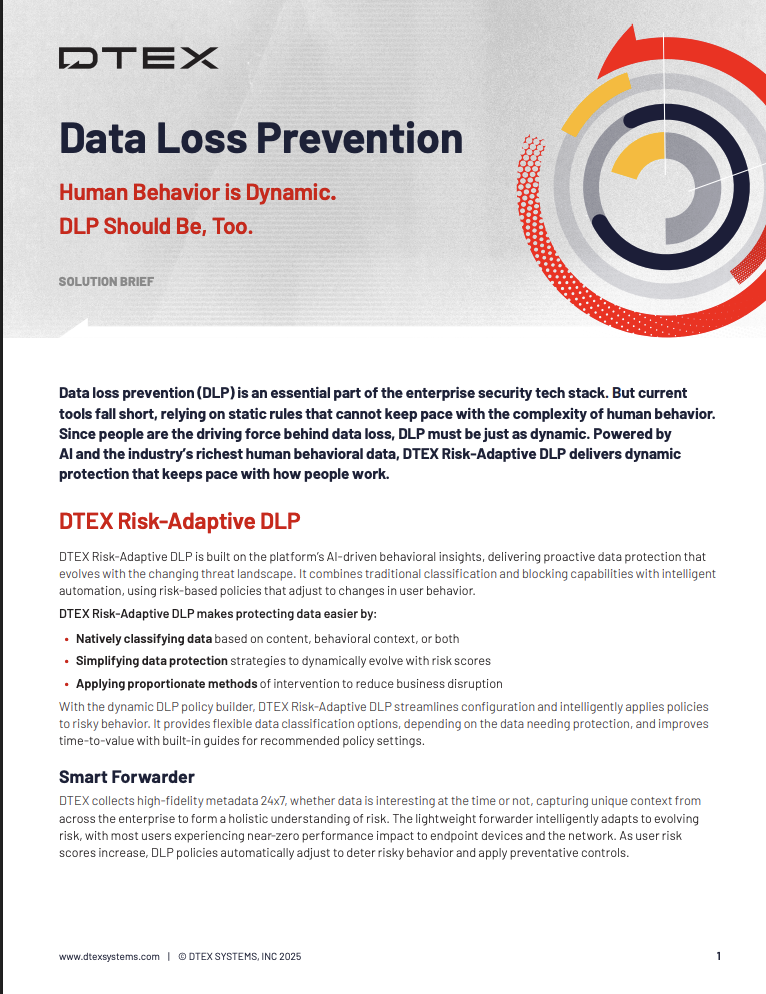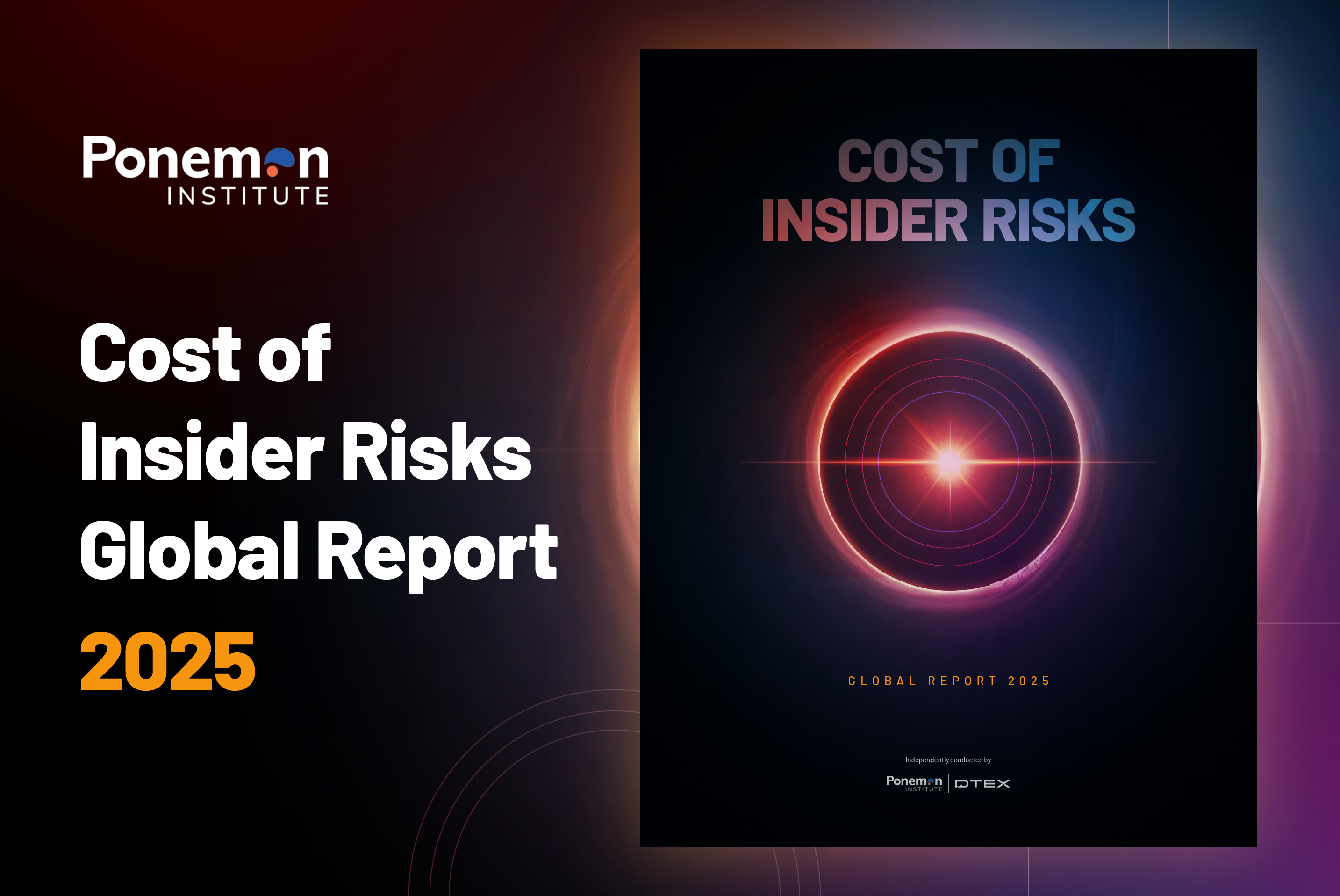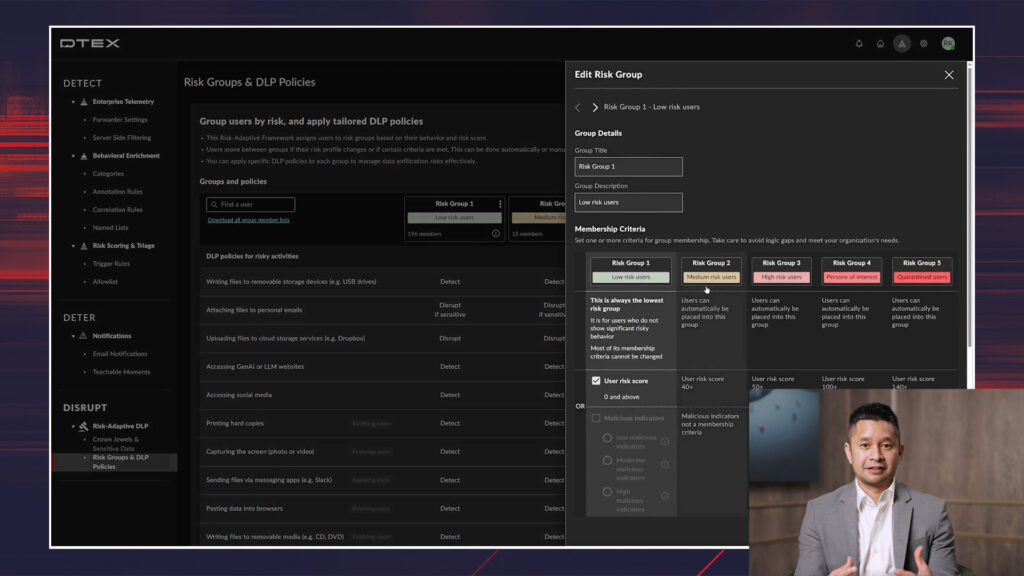Why Traditional DLP Can’t Keep Up
Compare Data-Focused DLP to DTEX Risk-Adaptive DLP
| Data-Focused DLP | Risk-Adaptive DLP | |
|---|---|---|
Data Classification | Supports traditional content inspection based on keywords that can miss intellectual property. | Supports traditional data classification and adds a novel, patented approach to identify unstructured data (intellectual property). |
Full Data Lineage | Tracks file changes in a timeline view unrelated to users so why changes are made is missing. | Tracks file changes through a patented method that associates file changes with how many people have touched it and most importantly, why? |
Context and Behavioral Risk | Lack of behavioral context to detect early risk to prevent a data breach. | Provides behavioral context to identify malicious intent, before data exfiltration. |
AI Security | Often limited to browser-based shadow AI detection that leaves blind spots. | Comprehensive shadow AI detection. Visibility into browser and non-browser utilities, uploads, downloads, and GenAI prompts. |
Unified Modern Platform | Point-products focused on data-only, with rigid rules and limited automation. | Purpose-built solution that combines UEBA with data loss prevention and AI for a true risk-adaptive approach. |
Ease of Deployment and Use | Not well suited to enterprise-wide deployments. Constant manual rule creation and tuning required. | Lightweight solution that intelligently applies policies to automatically adjust to changes in user behavior to apply preventative data loss controls. |
Introducing DTEX Risk-Adaptive DLP
DTEX Risk-Adaptive DLP is the modern solution for securing sensitive data in today’s complex, AI-enabled workplace. Unlike legacy DLP, it doesn’t rely on static rules or rigid policies. Instead, it continuously learns from user behavior, monitors how employees interact with AI tools, cloud apps, and endpoints, and applies dynamic, context-aware controls to prevent data loss.
With DTEX, security teams gain visibility, intelligence, and control over sensitive data while reducing false positives and workflow friction.
How DTEX Risk-Adaptive DLP Protects Your Sensitive Data
DTEX combines behavioral intelligence, native data classification, and adaptive policies into a single, unified platform.
Here’s how it protects your organization:
DLP Solution Brief
Discover how Risk-Adaptive DLP from DTEX redefines data protection with continuous behavioral analytics that detect risk before data leaves your environment. Learn how to eliminate false positives, uncover insider threats, and protect sensitive information without slowing your business.









